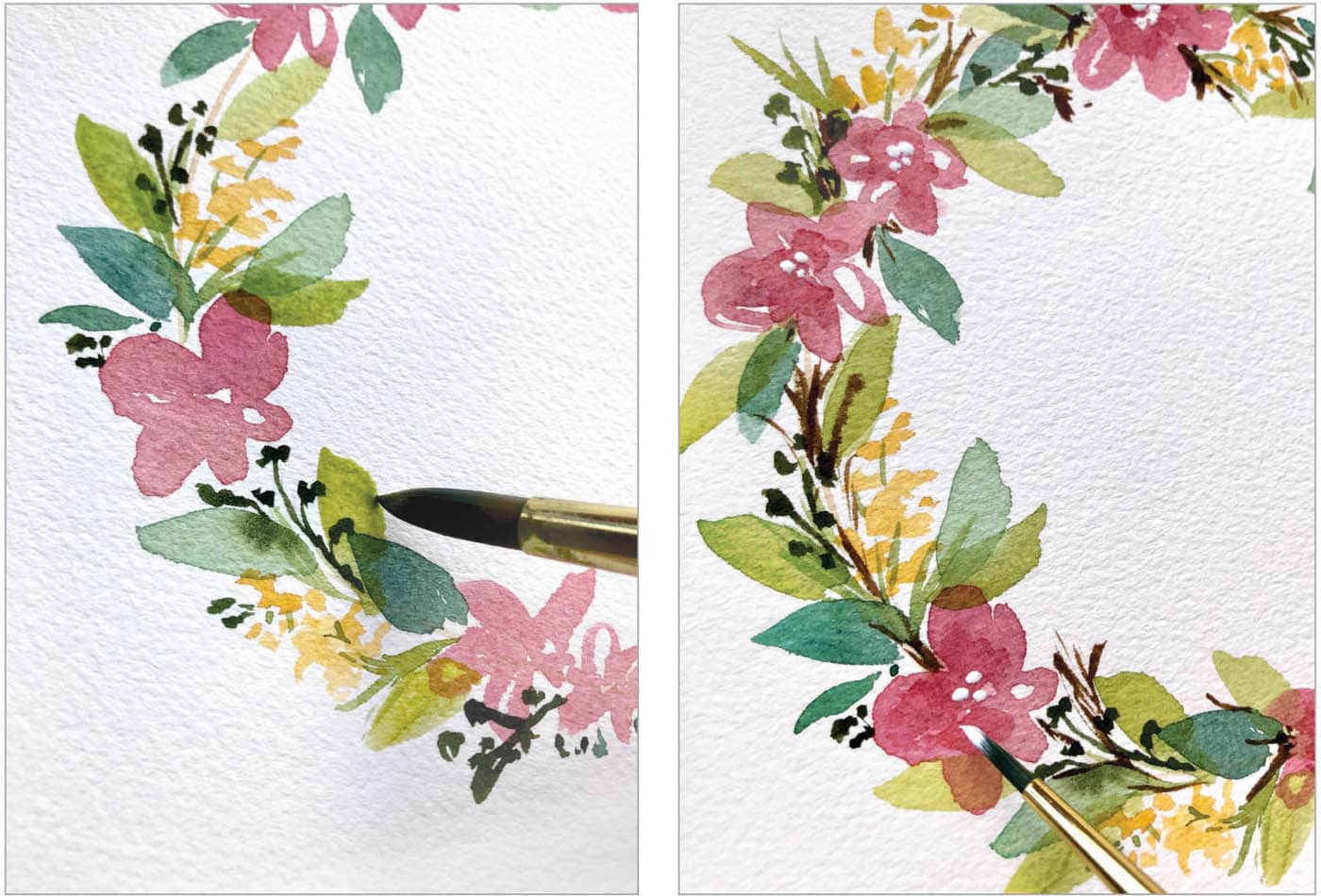PEONIES
Remember that a flower is like a cone, and all petals point toward the center. Use the body of the paintbrush to make the curvy tops of the petals and the tip of the brush to bring the petal to a point. Use light and dark values to create variety and depth, and add upper layers of petals with a lighter wash. You can create bleeding by adding the yellow center while the pink paint is still wet for a unique look, or you can allow the petals to dry before adding the center.



ROSES
When painting a rose, start with a small center circle and three lines around it. Create curved shapes that are more voluminous on one side. Coordinate the petals so the layers adjacent to one other don’t match up. Continue adding layers until the flower is the size you want.





OPEN FLOWERS
For open flowers, such as cosmos and pansies, paint one petal at a time until you reach the desired shape. Mix up the sizes of the petals for a lifelike look, and leave some white space in between for definition and to create the illusion of separation. Add more pigment to create interest and diversity in the petal color.


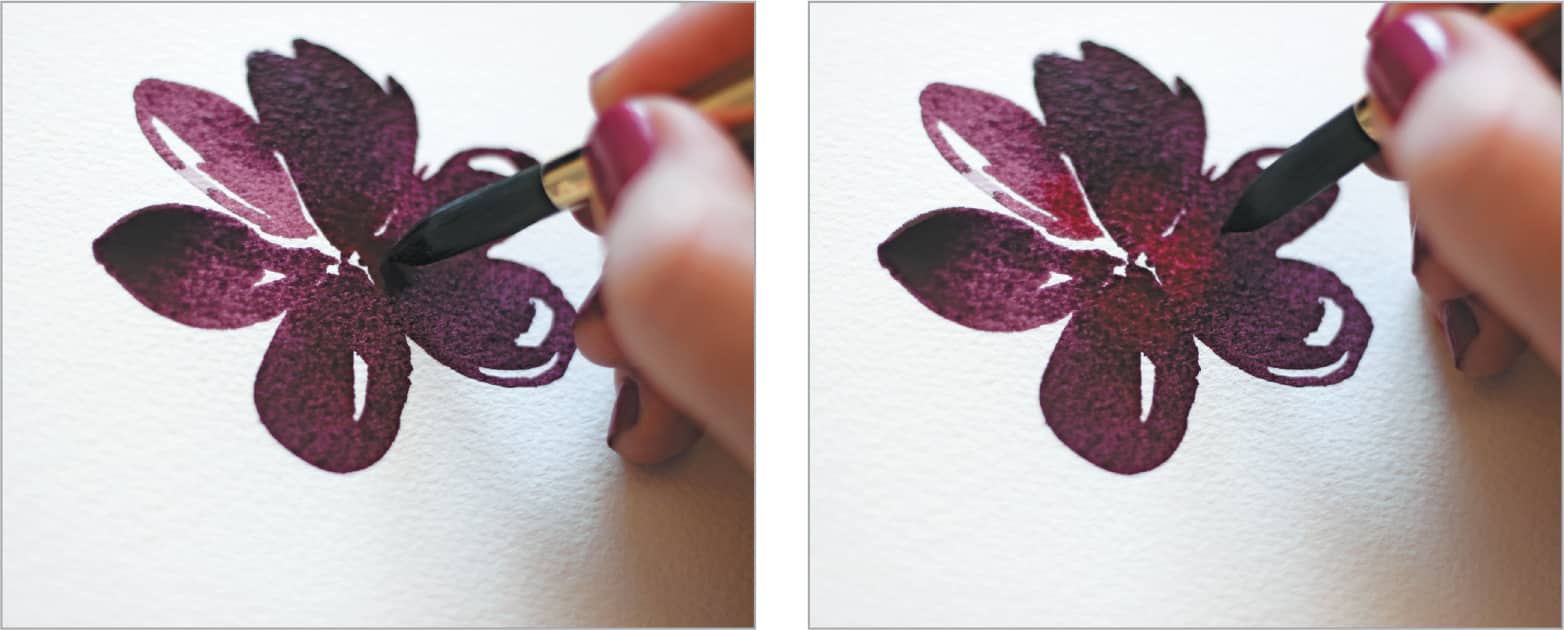
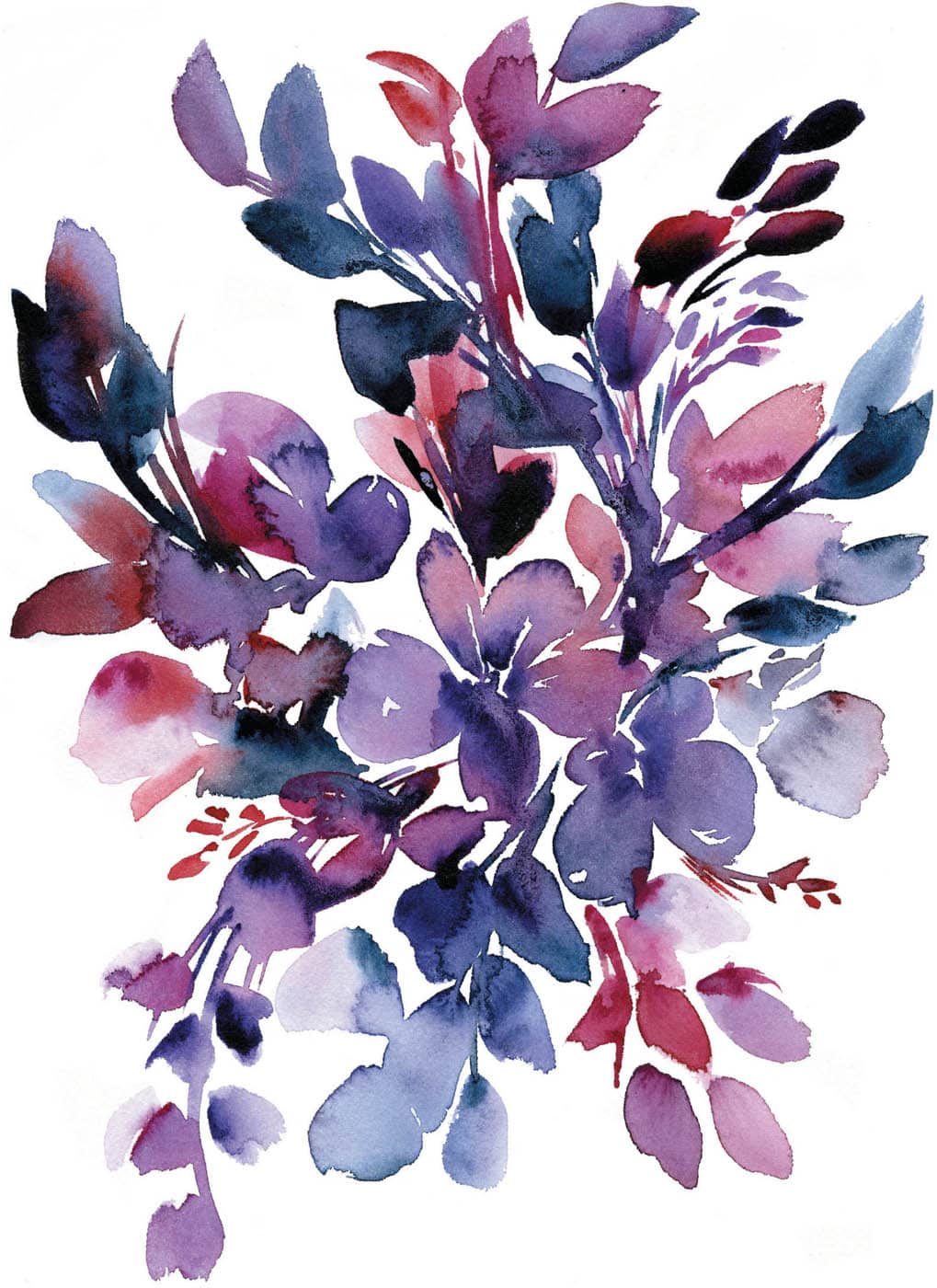
CLOSED FLOWERS
Some flowers, such as tulips, are more naturally closed, and the centers are not visible from the side. Paint the petals straight up and slightly curved inward. Create separation of petals with white space or lighter and darker paint values.




GREENERY
Although not as obviously varied as the vast array of colorful flowers, greenery can be just as beautiful and comes in many shapes, sizes, and shades of greens. Here are several easy and simple ways to paint lovely bits of greenery that you can add to your botanical paintings to create lush, full floral artwork.
Leaf 1

Using the body of the brush, push upward to create the entire leaf.
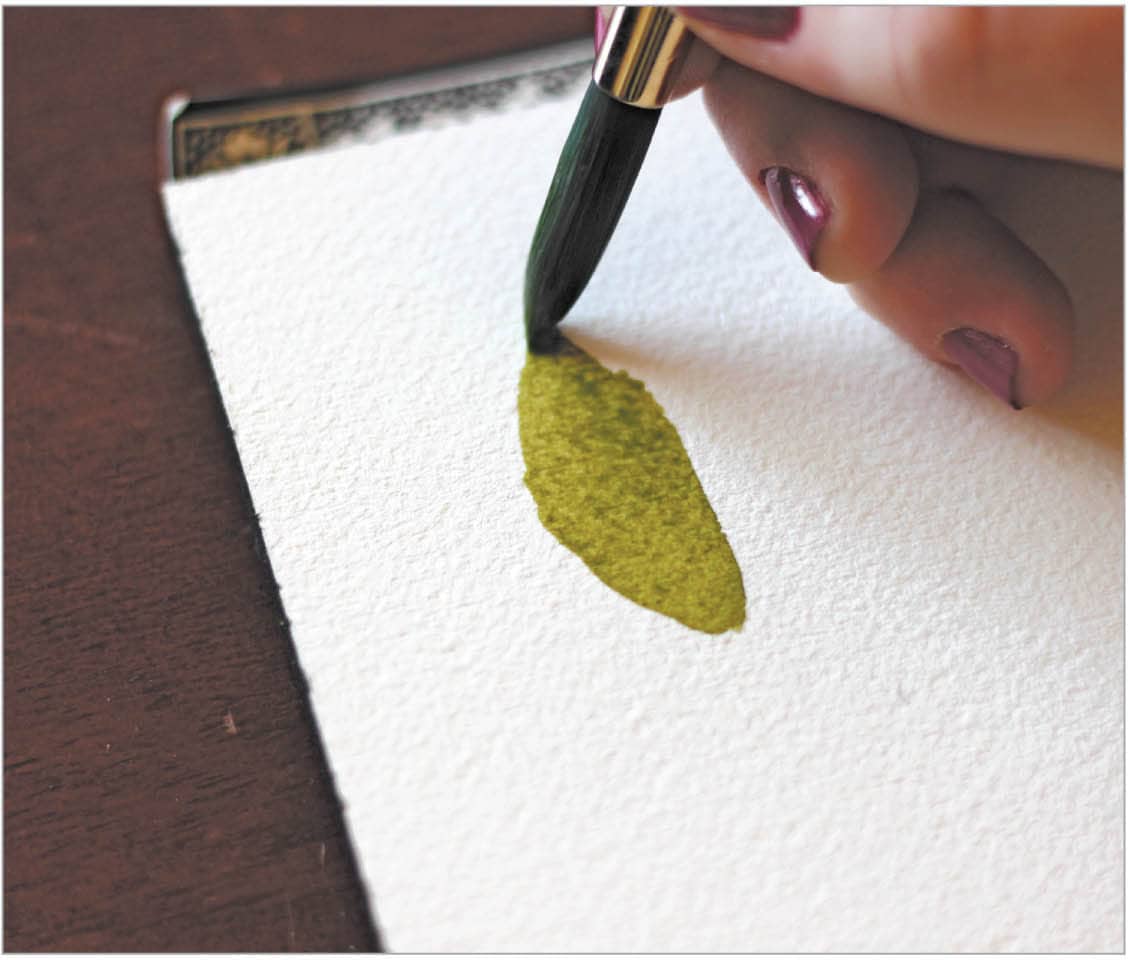
When you have reached the desired length of the leaf, use lighter pressure to transition to the tip of the brush to create the leaf tip.
Leaf 2

Imagining a line in the center, create a “C” shape with the body of the brush on one side.

Repeat on the other side.

Use light pressure at the top to form the tip of the leaf.
Leaf 3
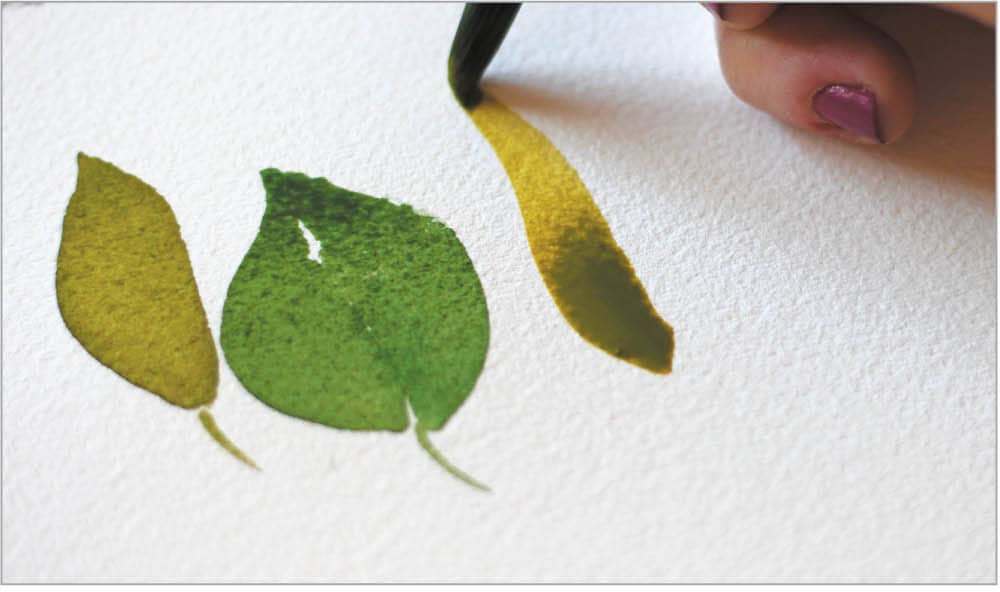
Use the body of the brush to create volume.

Paint long strokes for long leaves. Leaving the middle of the leaf white creates the illusion of a center line and defines the leaf.
Leaf 4
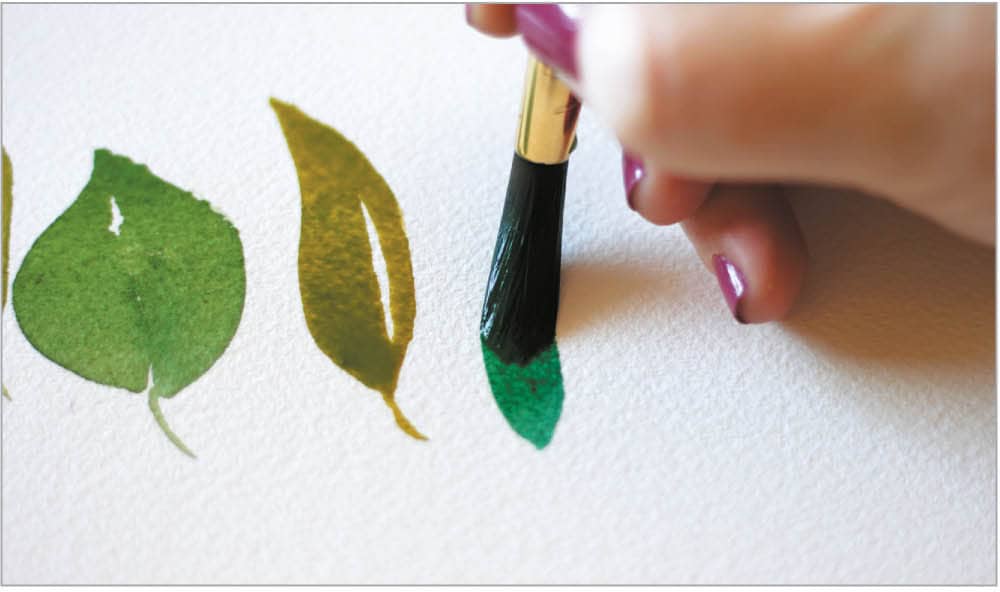
Use the body of the brush and a long stroke to create a slender, elongated leaf.
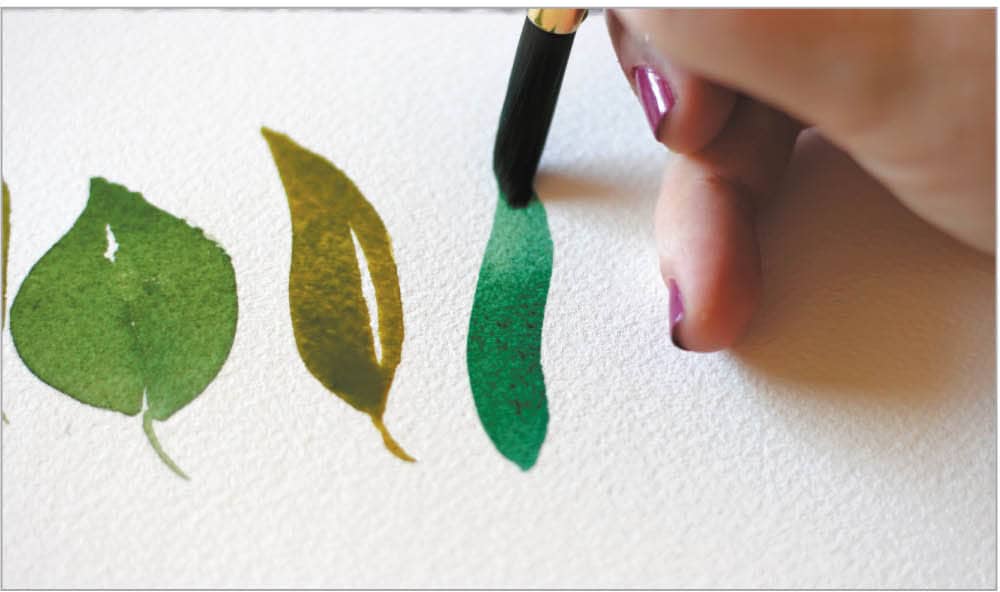
Remember to decrease the pressure on the brush as you near the end of the leaf to taper the stroke.

To create depth on leaves with no center line, apply darker color at the top or bottom—or both! This can suggest shadow as well as new growth.
Leaf 5

Use the tip of the brush to paint a leaf with jagged or rough edges.
Leaf 6
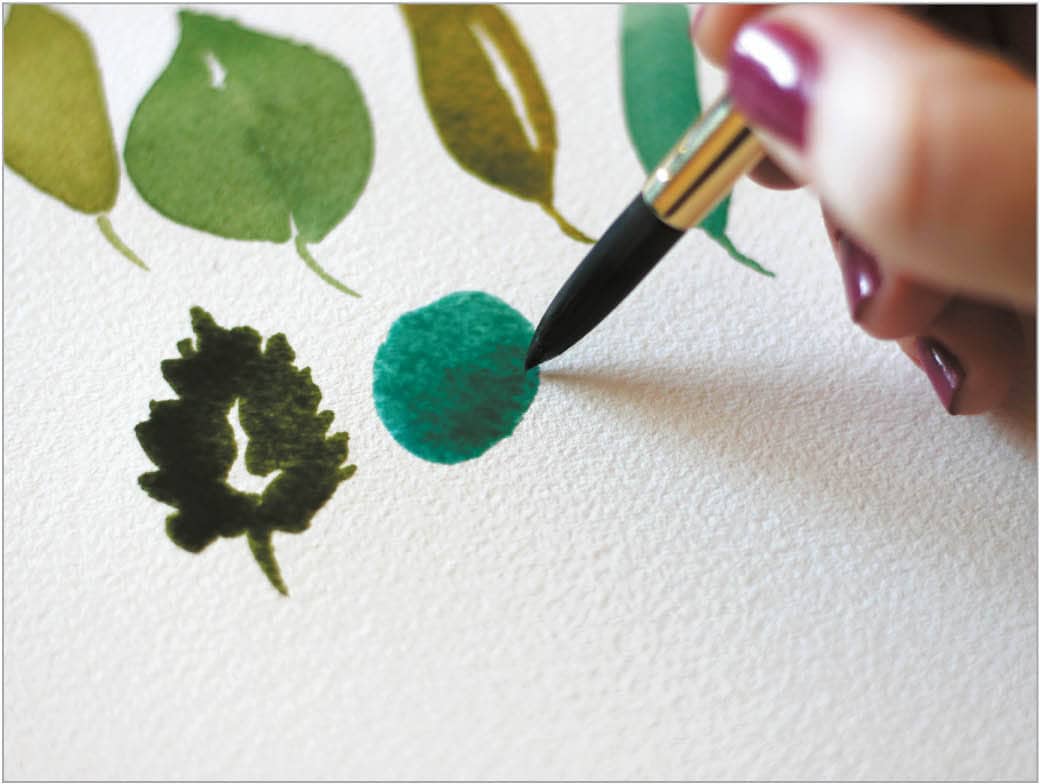
Use the body of the brush to create a smooth, round leaf.
Foliage 1

For short-leaved foliage, create the stem first. Then use the body of the brush to paint short leaves growing from smaller stems.
Foliage 2
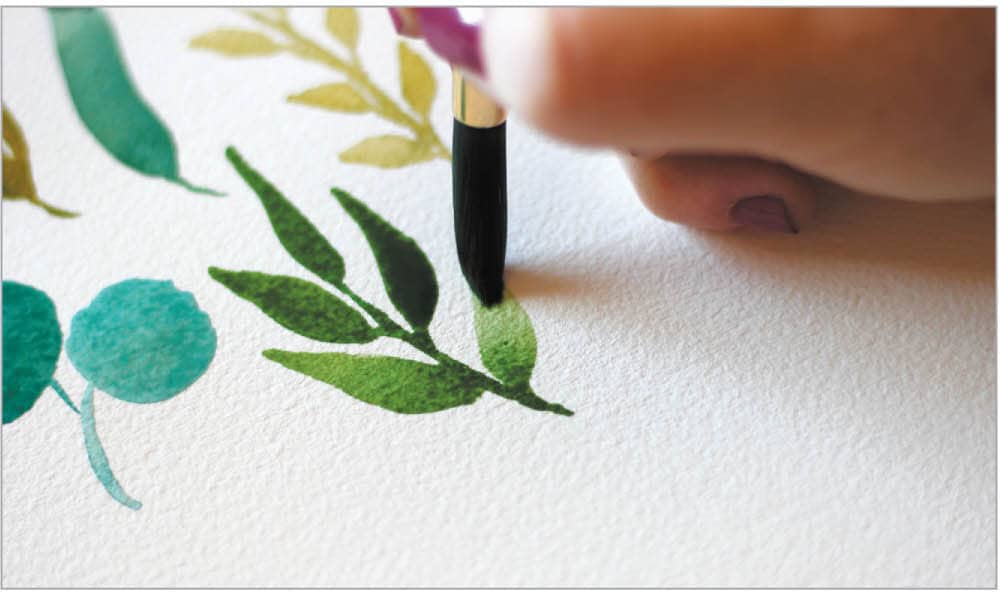
Follow the same process to paint long-leaved foliage. Create the stem first, and then use the body of the brush to paint voluminous leaves growing from smaller stems.
Foliage 3

For needled foliage, use light pressure to make quick strokes outward from the stem with the brush tip.
Foliage 4

Make long strokes for longer needles. For rounded needle tips, start away from the center and bring the point of the brush to the stem.
Foliage 5

Stems and random shapes perfectly capture the look of scattered greens, such as weeds.
Foliage 6

When painting grass, create long, thin lines while altering the direction in which they point.
GET CREATIVE:
PAINTED CACTUS GARDEN
Painting cacti is a fun way to stretch your creativity. Cacti come in all shapes, sizes, colors, and textures. We usually think of cacti as green, but many of these desert-dwelling plants feature beautiful brightly colored blooms. Cacti can be tall and skinny, round and squat, prickly and spiky, or even fuzzy!



Long lines with white space in between perfectly capture the ridges on a saguaro cactus.
GET CREATIVE:
WREATHS
Wreaths are another type of pattern. If you apply the same steps you learned for painting flowers and leaves, it will be easy to create a beautiful, uniform, and cohesive wreath.

